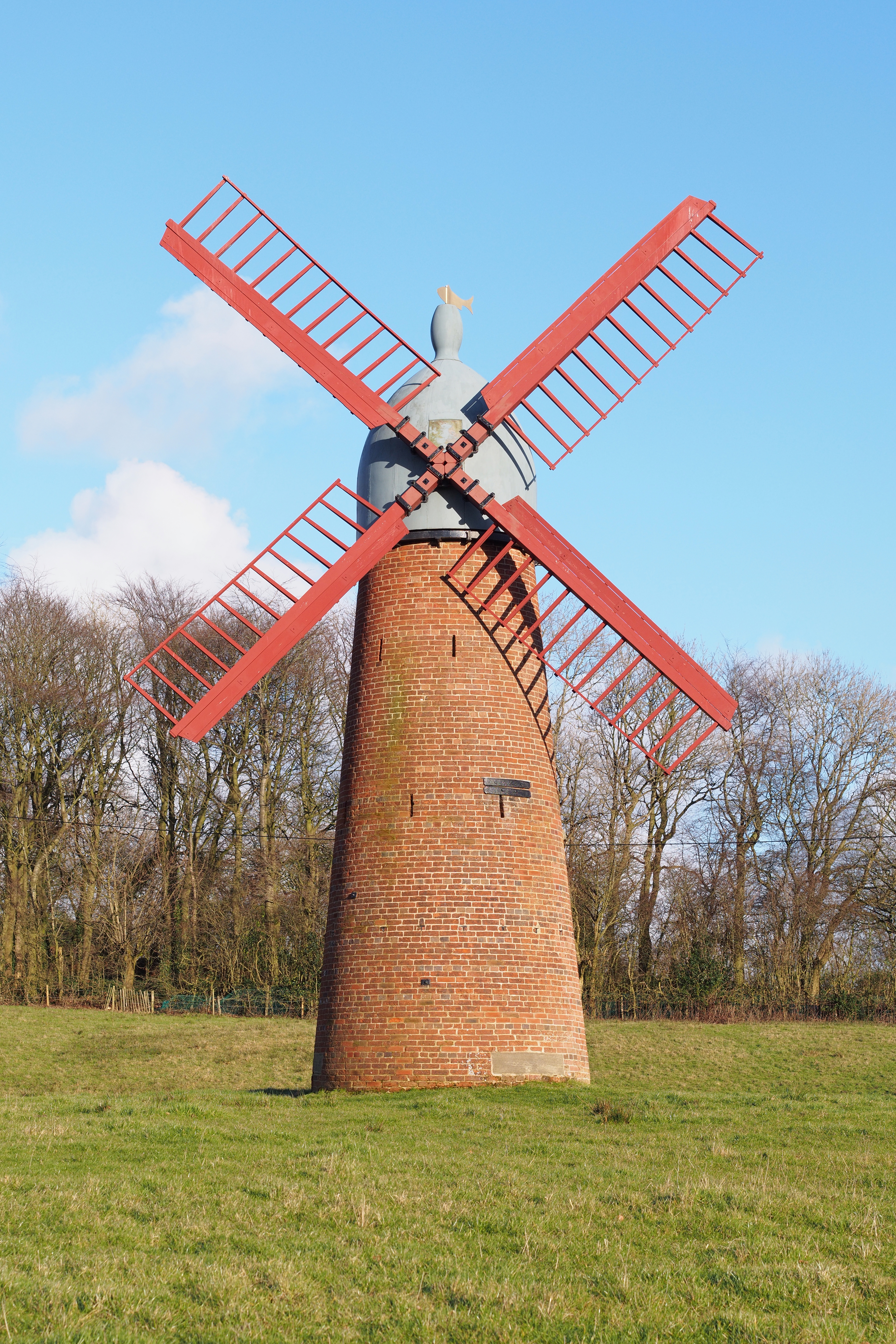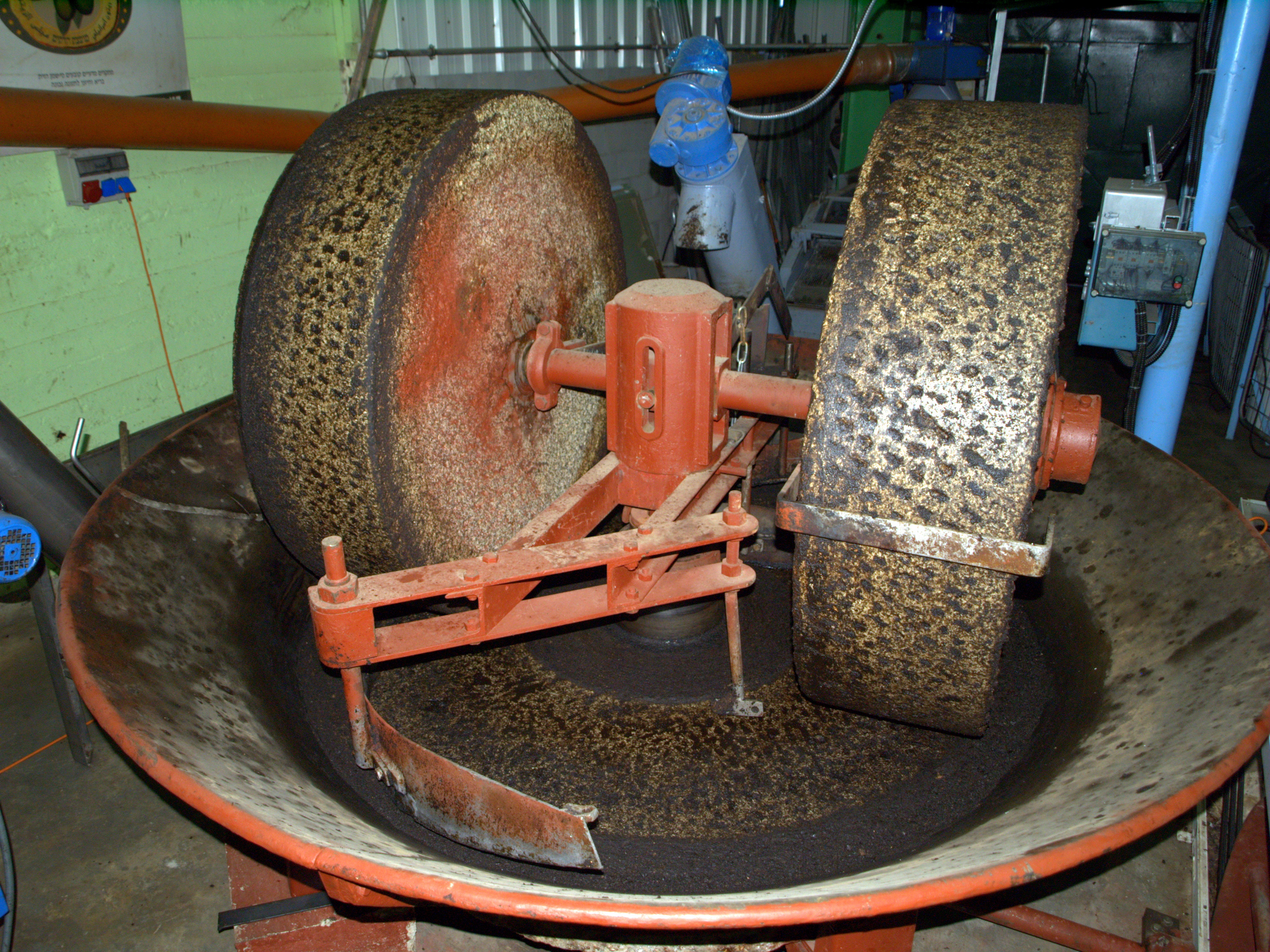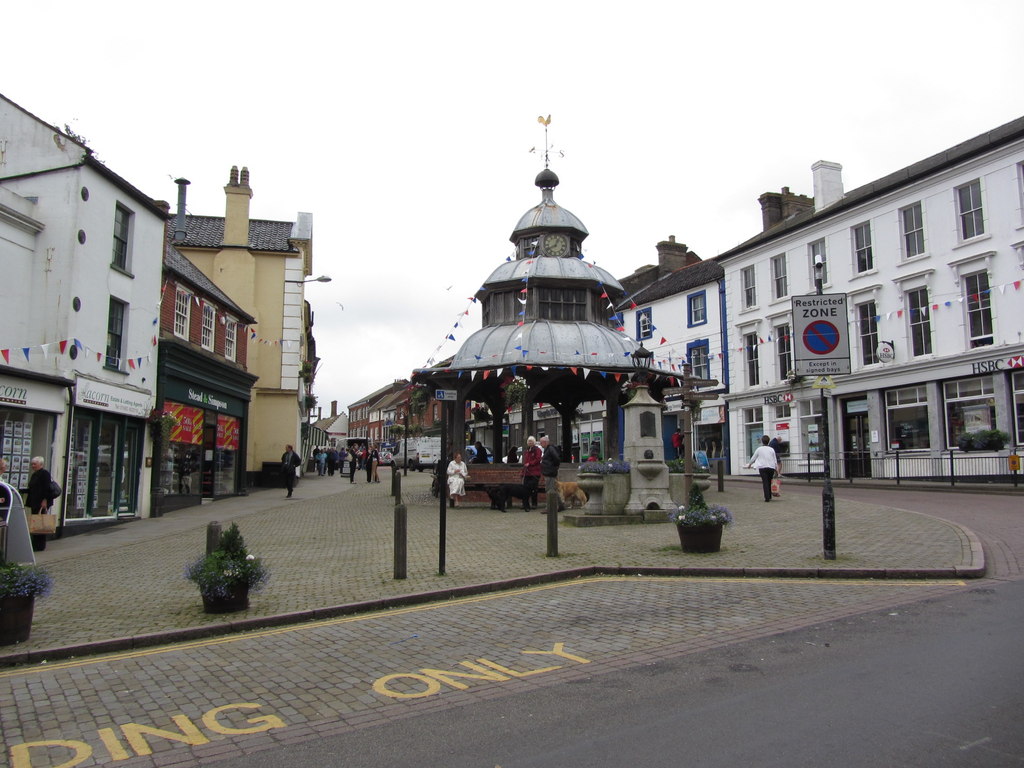|
East Runton Windmill
East Runton Windmill is a grade II listed tower mill at East Runton, Norfolk, England which has been converted to residential accommodation. History The first record of this windmill is its appearance on Bryant’s map of Norfolk published in 1826. The mill was owned by Joseph Baker in 1836 following his marriage with Susan Dawson in 1804. He was a miller and brickmaker. The mill was to let in 1843. On 1 November 1860 a fifteen year old girl named Martha Holman was struck by one of the sails and knocked unconscious. The mill was working until at least 1908, when Ronald Hall was the miller, but it was derelict in 1926. The mill still had a cap in 1937, but the sails and fantail had been removed by then. By 1949, the mill had been stripped of machinery. The tower retained the remains of the cap frame in 1984. In 2003, the mill was converted to residential accommodation, with a new cap and fantail added. Description East Runton Windmill is a five storey tower mill with a stage at s ... [...More Info...] [...Related Items...] OR: [Wikipedia] [Google] [Baidu] |
Grist Mill
A gristmill (also: grist mill, corn mill, flour mill, feed mill or feedmill) grinds cereal grain into flour and Wheat middlings, middlings. The term can refer to either the grinding mechanism or the building that holds it. Grist is grain that has been separated from its chaff in preparation for mill (grinding), grinding. History Early history The Greek geographer Strabo reported in his ''Geography'' that a water-powered grain-mill existed near the palace of king Mithradates VI Eupator at Cabira, Asia Minor, before 71 BC. The early mills had horizontal paddle wheels, an arrangement which later became known as the "Norse wheel", as many were found in Scandinavia. The paddle wheel was attached to a shaft which was, in turn, attached to the centre of the millstone called the "runner stone". The turning force produced by the water on the paddles was transferred directly to the runner stone, causing it to grind against a stationary "Mill machinery#Watermill machinery, bed", a ... [...More Info...] [...Related Items...] OR: [Wikipedia] [Google] [Baidu] |
Tower Mill
A tower mill is a type of vertical windmill consisting of a brick or stone tower, on which sits a wooden 'cap' or roof, which can rotate to bring the sails into the wind.Medieval science, technology, and medicine: an encyclopedia (2005), 520 This rotating cap on a firm masonry base gave tower mills great advantages over earlier post mills, as they could stand much higher, bear larger sails, and thus afford greater reach into the wind. Windmills in general had been known to civilization for centuries, but the tower mill represented an improvement on traditional western-style windmills. The tower mill was an important source of power for Europe for nearly 600 years from 1300 to 1900, contributing to 25 percent of the industrial power of all wind machines before the advent of the steam engine and coal power. It represented a modification or a demonstration of improving and adapting technology that had been known by humans for ages. Although these types of mills were effectiv ... [...More Info...] [...Related Items...] OR: [Wikipedia] [Google] [Baidu] |
Windmill Sail
Windmills are powered by their sails. Sails are found in different forms, from primitive common sails to the advanced patent sails. Jib sails The jib sail is found in Mediterranean countries and consists of a simple triangle of cloth wound round a spar. The mill must be stopped in order to adjust the reefing of the sail. Though rare in the UK, at least two windmills are known to have had jib sails (St Mary's, Isle of Scilly and Cann Mills, Melbury Abbas). Image:Windmill Antimahia Kos.jpg, Jib sails Image:Sobreiro.jpg, More fully spread Image:Spanish Mill, St Mary's.jpg, St Mary's, Isles of Scilly File:Cann Mill, Melbury Abbas.jpg, Cann Mills, Melbury Abbas Common sails The common sail is the simplest form of sail. In medieval mills, the sailcloth was wound in and out of a ladder-type arrangement of sails. Medieval sails could be constructed with or without outer sailbars. Post-medieval mill sails have a lattice framework over which the sailcloth is spread. There are v ... [...More Info...] [...Related Items...] OR: [Wikipedia] [Google] [Baidu] |
Windmill Fantail
A fantail is a small windmill mounted at right angles to the sails, at the rear of the windmill, and which turns the cap automatically to bring it into the wind. The fantail was patented in 1745 by Edmund Lee, a blacksmith working at Brockmill Forge near Wigan, England, and was perfected on mills around Leeds and Hull towards the end of the 18th century. Fantails are found on all types of traditional windmills and are especially useful where changes in wind direction are frequent. They are more common in England, Denmark and Germany than in other parts of Europe, and are little-known on windmills elsewhere except where English millwrighting traditions were in evidence. The rotating fantail turns the cap of the windmill via a system of gearing to a toothed rack around the top of the mill tower, or to wheels running on the ground in the case of a post mill The post mill is the earliest type of European windmill. Its defining feature is that the whole body of the mill that houses ... [...More Info...] [...Related Items...] OR: [Wikipedia] [Google] [Baidu] |
Listed Building
In the United Kingdom, a listed building is a structure of particular architectural or historic interest deserving of special protection. Such buildings are placed on one of the four statutory lists maintained by Historic England in England, Historic Environment Scotland in Scotland, in Wales, and the Historic Environment Division of the Department for Communities in Northern Ireland. The classification schemes differ between England and Wales, Scotland, and Northern Ireland (see sections below). The term has also been used in the Republic of Ireland, where buildings are protected under the Planning and Development Act 2000, although the statutory term in Ireland is "Record of Protected Structures, protected structure". A listed building may not be demolished, extended, or altered without permission from the local planning authority, which typically consults the relevant central government agency. In England and Wales, a national amenity society must be notified of any work to ... [...More Info...] [...Related Items...] OR: [Wikipedia] [Google] [Baidu] |
Tower Mill
A tower mill is a type of vertical windmill consisting of a brick or stone tower, on which sits a wooden 'cap' or roof, which can rotate to bring the sails into the wind.Medieval science, technology, and medicine: an encyclopedia (2005), 520 This rotating cap on a firm masonry base gave tower mills great advantages over earlier post mills, as they could stand much higher, bear larger sails, and thus afford greater reach into the wind. Windmills in general had been known to civilization for centuries, but the tower mill represented an improvement on traditional western-style windmills. The tower mill was an important source of power for Europe for nearly 600 years from 1300 to 1900, contributing to 25 percent of the industrial power of all wind machines before the advent of the steam engine and coal power. It represented a modification or a demonstration of improving and adapting technology that had been known by humans for ages. Although these types of mills were effectiv ... [...More Info...] [...Related Items...] OR: [Wikipedia] [Google] [Baidu] |
East Runton
East Runton is a village in the civil parish of Runton in the England, English county of Norfolk. East Runton is located west of Cromer and north of Norwich. The village lies on the A149 road, A149 coast road but most of the dwellings can be found just south of the road, nestled around the two village greens. History East Runton's name is of Anglo-Saxon origin and derives from the Old English for ''Runa's'' or ''Runi's'' settlement. In the Domesday Book, East Runton is listed alongside West Runton as a settlement of 24 households in the Hundred (county division), hundred of Erpingham, North Erpingham. In 1086, the village was divided between the East Anglia, East Anglian estates of Roger Bigod of Norfolk, Roger Bigod and William d'Ecouis. East Runton Windmill was first recorded in 1826 and was in operation until the machinery was removed in 1949, with the mill later being converted into a private residence. Geography East Runton's population statistics are shared with ... [...More Info...] [...Related Items...] OR: [Wikipedia] [Google] [Baidu] |
Norfolk
Norfolk ( ) is a Ceremonial counties of England, ceremonial county in England, located in East Anglia and officially part of the East of England region. It borders Lincolnshire and The Wash to the north-west, the North Sea to the north and east, Cambridgeshire to the west, and Suffolk to the south. The largest settlement is the city of Norwich. The county has an area of and a population of 859,400. It is largely rural with few large towns: after Norwich (147,895), the largest settlements are King's Lynn (42,800) in the north-west, Great Yarmouth (38,693) in the east, and Thetford (24,340) in the south. For local government purposes Norfolk is a non-metropolitan county with seven districts. The centre of Norfolk is gently undulating lowland. To the east are the Broads, a network of rivers and lakes which extend into Suffolk and which are protected by the Broads Authority, which give them a similar status to a National parks of England and Wales, national park. To the west the ... [...More Info...] [...Related Items...] OR: [Wikipedia] [Google] [Baidu] |
Millstone
Millstones or mill stones are stones used in gristmills, used for triturating, crushing or, more specifically, grinding wheat or other grains. They are sometimes referred to as grindstones or grinding stones. Millstones come in pairs: a stationary base with a convex rim known as the bedstone (or nether millstone) and a concave-rimmed runner stone that rotates. The movement of the runner on top of the bedstone creates a "scissoring" action that grinds grain trapped between the stones. Millstones are constructed so that their shape and configuration help to channel ground flour to the outer edges of the mechanism for collection. The runner stone is supported by a cross-shaped metal piece ( millrind or rynd) fixed to a "mace head" topping the main shaft or spindle leading to the driving mechanism of the mill (wind, water (including tide), or other means). History The origins of an industry Often referred to as the "oldest industry", the use of the millstone is inextr ... [...More Info...] [...Related Items...] OR: [Wikipedia] [Google] [Baidu] |
Towers Completed In The 1820s
A tower is a tall structure, taller than it is wide, often by a significant factor. Towers are distinguished from masts by their lack of guy-wires and are therefore, along with tall buildings, self-supporting structures. Towers are specifically distinguished from buildings in that they are built not to be habitable but to serve other functions using the height of the tower. For example, the height of a clock tower improves the visibility of the clock, and the height of a tower in a fortified building such as a castle increases the visibility of the surroundings for defensive purposes. Towers may also be built for observation, leisure, or telecommunication purposes. A tower can stand alone or be supported by adjacent buildings, or it may be a feature on top of a larger structure or building. Etymology Old English ''torr'' is from Latin ''turris'' via Old French ''tor''. The Latin term together with Greek τύρσις was loaned from a pre-Indo-European Mediterranean language, ... [...More Info...] [...Related Items...] OR: [Wikipedia] [Google] [Baidu] |
Windmills In Norfolk
A windmill is a machine operated by the force of wind acting on vanes or sails to mill grain (gristmills), pump water, generate electricity, or drive other machinery. Windmills were used throughout the high medieval and early modern periods; the horizontal or panemone windmill first appeared in Persia during the 9th century, and the vertical windmill first appeared in northwestern Europe in the 12th century. Regarded as an icon of Dutch culture, there are approximately 1,000 windmills in the Netherlands today. Forerunners Wind-powered machines have been known earlier, the Babylonian emperor Hammurabi had used wind mill power for his irrigation project in Mesopotamia in the 17th century BC. Later, Hero of Alexandria (Heron) in first-century Roman Egypt described what appears to be a wind-driven wheel to power a machine.Dietrich Lohrmann, "Von der östlichen zur westlichen Windmühle", ''Archiv für Kulturgeschichte'', Vol. 77, Issue 1 (1995), pp. 1–30 (10f.) A. G. Dra ... [...More Info...] [...Related Items...] OR: [Wikipedia] [Google] [Baidu] |
North Norfolk
North Norfolk is a Non-metropolitan district, local government district in Norfolk, England. Its council is based in Cromer, and the largest town is North Walsham. The district also includes the towns of Fakenham, Holt, Norfolk, Holt, Sheringham, Stalham and Wells-next-the-Sea, along with numerous villages and surrounding rural areas. The district lies on the north coast of Norfolk, facing the North Sea, with much of its coastline lying within the Norfolk Coast AONB, Norfolk Coast Area of Outstanding Natural Beauty. Some south-eastern parts of the district lie within The Broads. The neighbouring districts are Borough of Great Yarmouth, Great Yarmouth, Breckland District, Breckland, Broadland and King's Lynn and West Norfolk. History The district was created on 1 April 1974 under the Local Government Act 1972, covering seven former districts which were all abolished at the same time: *Cromer Urban district (England and Wales), Urban District *Erpingham Rural District *North Wa ... [...More Info...] [...Related Items...] OR: [Wikipedia] [Google] [Baidu] |







